
Location and
period of operation:
|
New Hall
Pottery Co Ltd
|
Hanley
|
Aug
1899
|
1956
|
|
Earthenware
manufacturer at the New
Hall works, Hanley,
Stoke-on-Trent
-
When
the New Hall Pottery Co. was founded in 1899/1900 they took over the
New Hall works and also the business of Plant and Gilmore, who had
been tenants of Shelton (New) Hall since 1892.
-
The
business owed its origin to Robert Audley, who, at the age of forty,
with no experience, became a Master Potter.
-
In
1913 (when King George V and Queen Mary visited the Potteries) it was
authoritatively asserted that 'the Company is known all over the world
as the largest manufacturers of cheap toilet sets and jugs.' In 1908
the Company produced and sold more than 50,000 toilet sets of the
Waverley shape alone.
-
After
the first world war was over a sweeping reconstruction took place, for
an important part of the factory had been burnt down and left in ruins
for lack of building material. A new well-designed three storied
building designed to house the packing department, the glost drawing
warehouse and decorating shops was built. Three old intermittent glost
ovens were replaced by a 250 foot long recuperative and regenerative
chamber kiln of 23 chambers.
-
After the war Robert Audley took into partnership his two sons-in-law – Albert Cook and Harold Clive. The latter was an expert potter and a man of foresight. He realized that the demand for toilet sets was being killed by the growing popularity of fixed lavatory basins and that milk and beer bottles were supplanting jugs for certain everyday uses. He therefore turned his attention to dinner and hotel wares.
-
The economic situation during the decade 1926-1936 was one of peculiar difficulty and anxiety for all the potteries, including New Hall. There was no coal and no work for months at one period. Mr G. E. Stringer, Chairman and
Director, summarised the situation in the following words:
-
"This year (1926) hastened, if it did not entail, the financial crisis of 1931, when our customers could not place their orders owing to a lessened demand and mounting stocks. The ordinary channels of trade were moreover being diverted into shops called chain stores with an immense capacity to sell a cup and its saucer for three-pence - tuppence for the cup and its handle and a penny for the saucer.... In order to sell something, men pretended to give away something else, and the so-called gift scheme affected every trade - silver, glass, leather and particularly pottery. The quantities required by these schemes were fantastic and in 1936 New Hall purchased the New Pearl Pottery to enlarge its
capacity".
-
During the
Second World War the company remained in production, it closed its decorating departments and became a chief source of supply to the various ministries concerned with the supply to the armed forces. In the years immediately following, production gradually swung back into its customary lines for the home market, while the overseas trade was, by 1948, in excess of anything achieved before.
-
New
Hall Pottery remained open during the Second World War under the Wartime
Concentration Scheme - they were permitted to produce
undecorated domestic ware. They also produced canteen ware for the British
armed forces.
-
In
June 1945 New Hall Pottery were
granted a licence to produce 'fancies'
for the home market.
-
The
New Hall Pottery Co. ceased trading in 1956 and the moulds for the
company's hotel ware were acquired by the Royal Art Pottery - a member
of the Colclough Group.
|
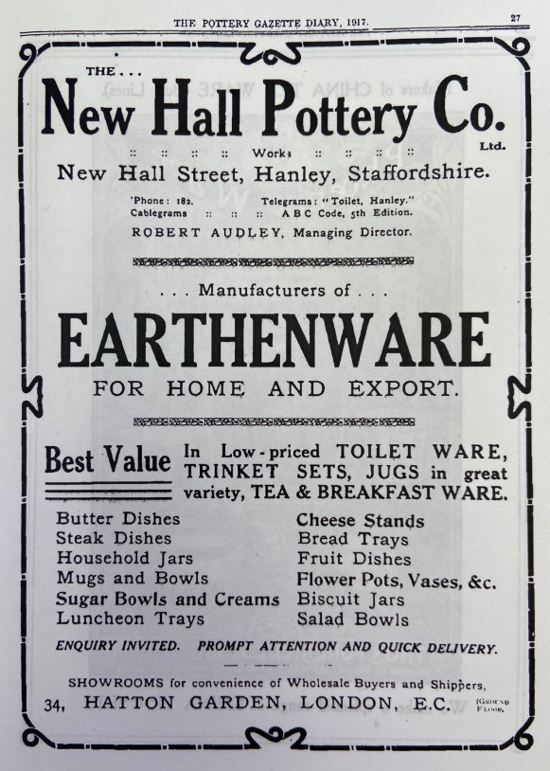
1917 advert for the New Hall
Pottery Co
The Pottery
Gazette
Tube
lined Ware

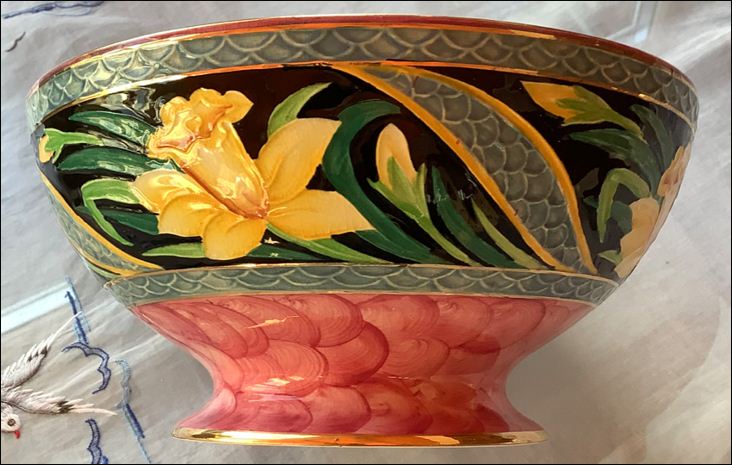
Newhall circular pedestal bowl
decorated with bands of tube-lined daffodils
photos
courtesy: Valerie Skelton
Boumier Ware
Lucien
Emile Boullemier
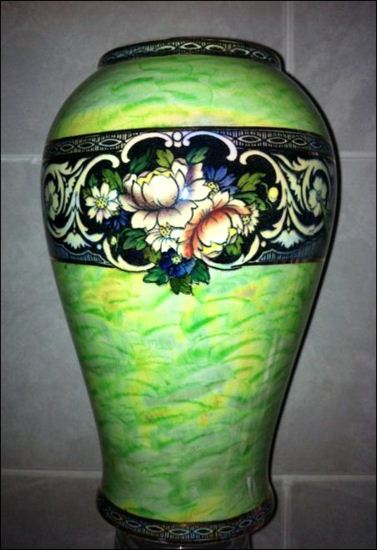
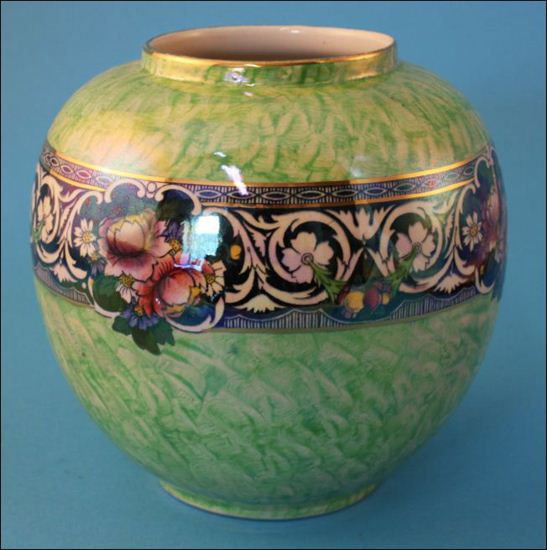
Newhall Boumier Ware vases
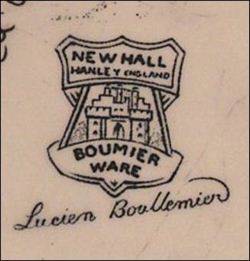
NEW HALL
Hanley England
Boumier
Ware
Lucien Boullemier
|
Lucien Boullemier was the son of the French-born ceramic artist Antonin Boullemier, who had moved to Stoke in 1872 to work as a decorator at Minton's factory.
Boullemier worked at Mintons factory and then at the Soho Pottery in Cobridge, before being recruited by C.T. Maling of Newcastle upon Tyne to take charge of their decorating department. Until 1926 he had been engaged in painting quite high class porcelain, and he introduced a range of more glamorous designs into the mass-market Maling range, using gold printing techniques and lustred surfaces.
In 1936 he left to work for the New Hall Pottery Company where he produced a range called "Boumier Ware", each piece of which carried his facsimile signature. |
(In 1896, he had married Mary Emma Sandland, the dressmaker daughter of Staffordshire pottery owner,
William Sandland)
Marks used on
ware for identification:
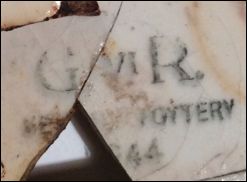
G VI R
Newhall Pottery
1944 |
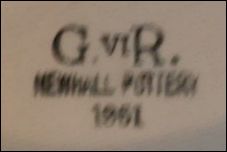
G VI R
Newhall Pottery
1951
|
|
The
marks shown indicates that the ware was produced for and supplied to the
British Government; it was ultimately property of the Crown/Government,
hence the GR-VI Cypher.
This mark is there to distinguish the piece from being normal ‘utilitarian’ ware for public sale
during the period surrounding the
Second World War.
Newhall
Pottery (and others) were given government contracts throughout the late 1930s
and into the 1940s (WWII) and produced canteen ware - most likely for
the armed services.
The
year of manufacturer is generally included. |
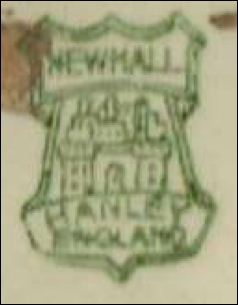
NEWHALL
Hanley
England
|

NEWHALL
Hanley Staffs
Made in England
|
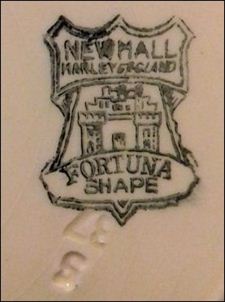
NEWHALL
Hanley England
this mark has the impressed
numbers 5 37 which indicate the
month and year of manufacture - May 1937
|
marks used
c.1930-51
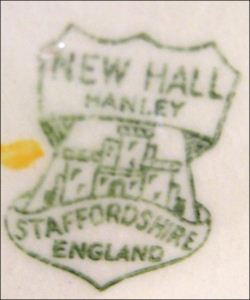
NEW HALL
Hanley
Staffordshire
England
restyled mark
used c.1951-56
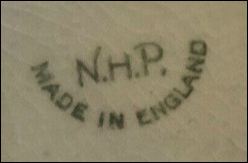
N.H.P.
Made in England
simple mark using initials NHP
date range uncertain
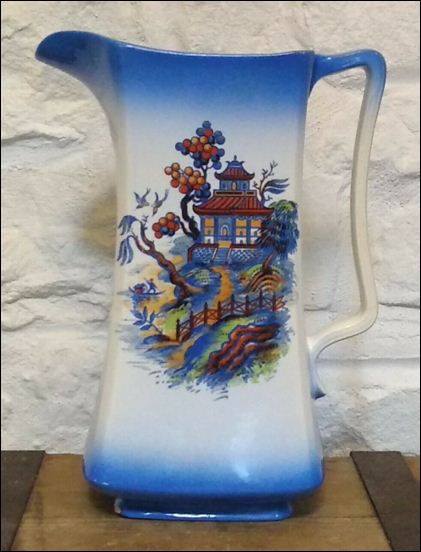
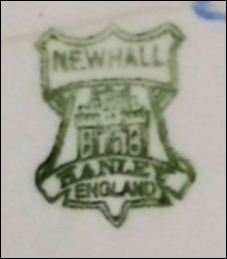
this jug is in the style of the wash set
with the decoration of the tray - shown below
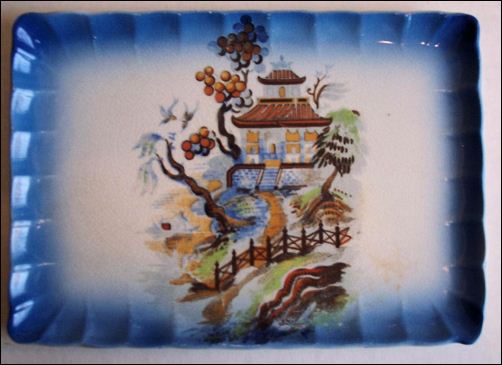
tray - decoration based
on the Willow pattern |
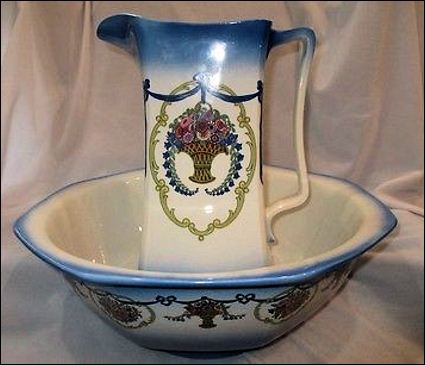
wash set |

N.H.P.
Made in England
the tray and wash set have this
simplified mark
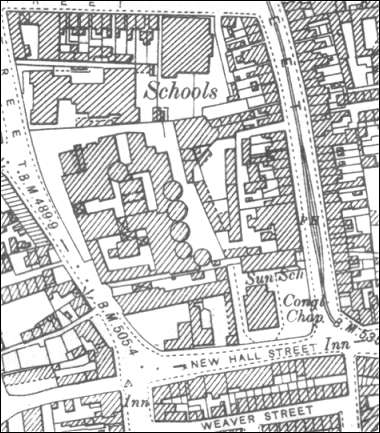
New Hall Works from an 1898 OS
map
- click
for more on the history of the New Hall Works -
Questions, comments,
contributions?
email: Steve Birks
|
Page History:
Page
created 14th March 2021
updated:
21 Feb 2024 - introduction expanded, examples of marks with GR-VI Cypher
added.
last
updated: 14 Oct 2025 - |
![]()
















